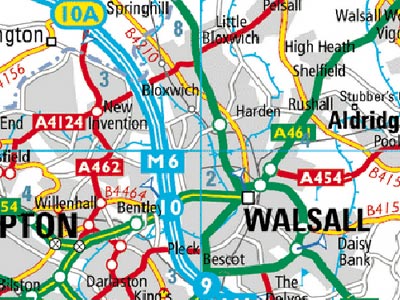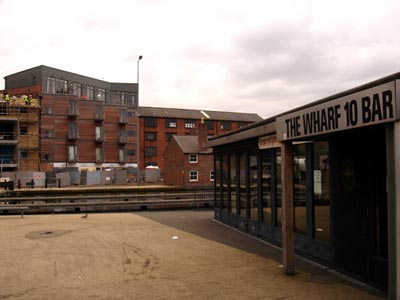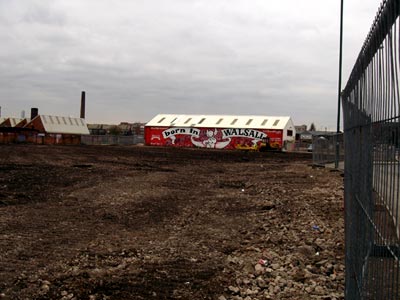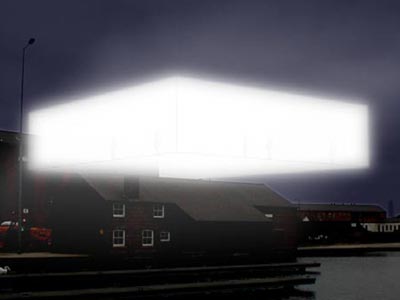Walsall Council: An Urban Line
An antidote to the haunted escapism of a community on its search for identity
Urban Planning and Framework Design consulting
2005
Walsall, UK
Commissioned by moove architecture, Will Alsop, and Urban Splash
Urban Planning and Framework Design consulting by Markus Miessen
Project: development of a masterplan and regeneration scheme for Walsall
Objective: Property Development in post-industrial urban centre
The following was a proposal to deliver a design that is married with both complex narrative and eventual structures to the Walsall Council. The question we considered as crucial was: how do you get people to interact with your property? It is our believe that a building itself will not deliver such ambition. We were interested in ways of triggering social interaction in order to stimulate a potential market: a clientele that engages with the site as a piece of public space and therefore starts to identify with it.
The existing buildings are based on a masterplan both conventional in the sense that it lays out plan and the belief in the landmark as the only means of urban regeneration. We agree with the exiting approach of Good Practice as a starting point for change, but strongly recommend a more holistic effort to prepare the site for social interaction. Urban Splash should take into consideration the introduction of an urban retreat, a complex system of events, physical structures and iconic gestures that prepares the ground for the coming building phase.
Throughout the project we were convinced that such complex approach would allow for the creation of a dynamic space rather than a place with a fixed and therefore vulnerable identity. However, by implementing a series of anchor-points, our proposal situates the development into a larger cultural and social context. It attracts both temporary and permanent visitors drawn from a large territorial context.
Interaction—at least in the existing context—can only be achieved if, whatever physical design is being implemented, it is embedded in temporal social structures, which stimulate use. One needs to be willing to spend slightly more efforts on seemingly unnecessary framework, meaning that both the “site as a future development opportunity” will rise in public perception and that particularly younger people—who will eventually be the customers and potential clients in years to come—will identify with the development.
The reason for applying a flexible framework is to counteract the fact that at no time within the development, one is able to fully predict the future need of the customer. Our suggestions emphasised a “coupled design”, one that allows for the physical application to sit in a managed framework with a rotating timetable of shared responsibilities and the implementation of strategic events. In this context, the existing “boathouse” is absolutely crucial. Without having to spend huge amounts of money, it offers an envelope for things to occur and can easily be appropriated for very diverse usage. By altering its current state, the council would be able to set up an infrastructure for events, interaction and situations to occur. By marrying the physical with the ephemeral, it is possible to set up new relationships between the city and the user.
We developed new ways of how people can meet, both fixed and mobile in nature, on water and on land.
In terms of social engagement with the surroundings, a social structure will emerge as soon as the grounds for such emergence are being prepared. By introducing particular anchor points, people will be attracted for various reasons, rather than by the physicality of the buildings only. Excitement about physicality is temporal. Even if you believe on a profound level that, for example, Tate Modern is a beautiful building, you would not go there twice a week to simply “look at it”. If you would go there twice a week, it would most likely be for other reasons, such as visiting different kinds of exhibitions, performances, or restaurants and bars. Our proposal allows drawing people in on a regular basis, because they are interested in what is happening on your site and its context. And as a bonus, it is all happening in a beautiful space.
The project developed five related narrative strands:
(1) The Gateway,
(2) The Square,
(3) The Basin,
(4) The Docking Station, and
(5) The Trail.
One can imagine these elements as part of a network of spaces, linked by a timetable, both in terms of micro and macro level, i.e. construction phases (from now +10 years) and the 1:1, i.e. when can I get my beer, in which place, when will the museum shop open, when will I be able to organise my community party et cetera. There are a number of existing structures, which try to utilise both the historic heritage and the new landmarks, which Walsall is proud of. This pride should be exploited rather than met with a patronising top-down approach.
At the moment, all existing trails are designed for children only and all existing functional spaces are led by economic concerns. But one needs to understand that by drawing particularly young people (16-35) into the area, the area will quickly be regarded as a place of opportunity in the public eye.
Five trails have already been developed across Birmingham and the Black Country to help explore and record the history of this amazing network. These trails can be done on a walk through town centres or as part of a visit to attraction such as Walsall New Art Gallery. We proposed that the allocated site will sit in this network of trails. Furthermore, we proposed to improve the local environment by enabling local communities to engage with the site, deliver better designs, a more welcoming atmosphere and convenient access.



